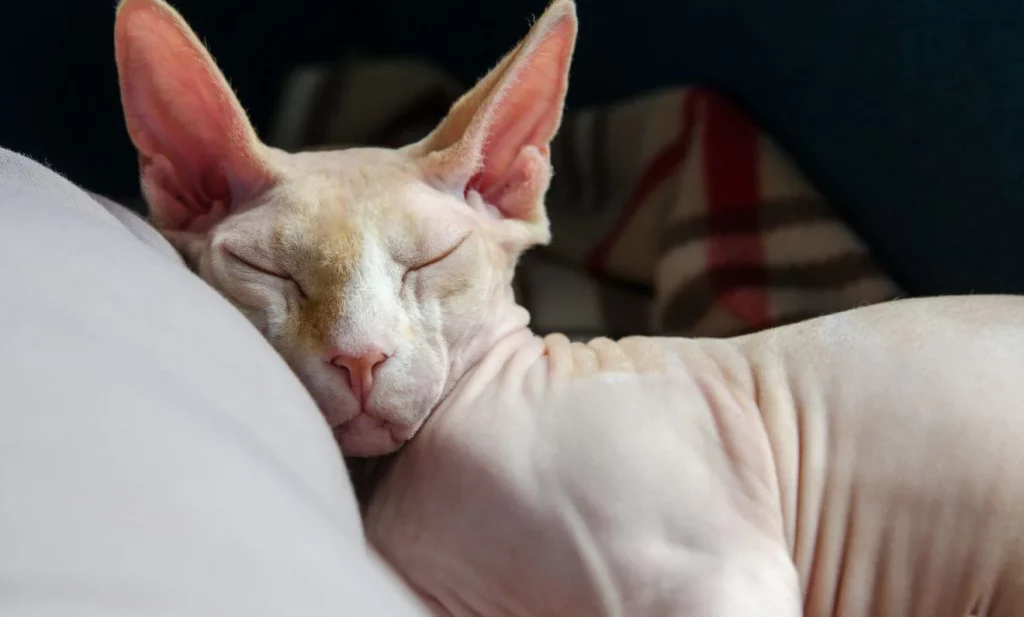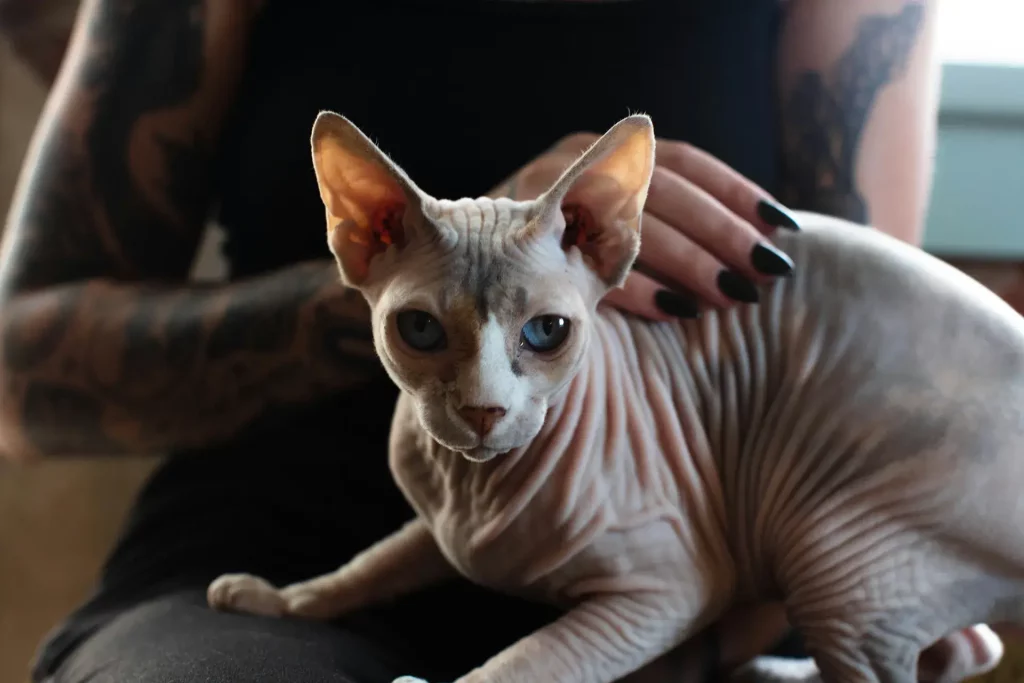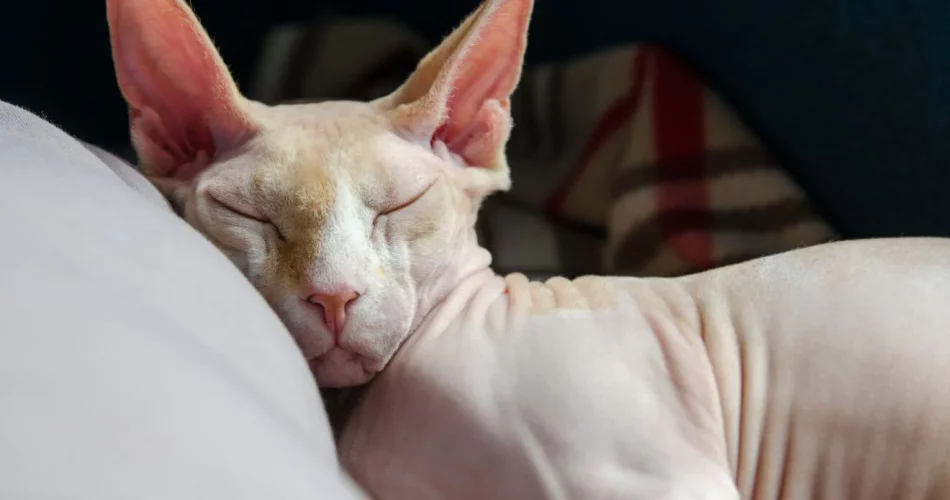Owning a hairless cat is an experience that combines fascination, care, and a bit of extra effort. These unique felines, often seen as unusual due to their lack of fur, have a distinctive charm that captures the hearts of many cat lovers. Whether you’re considering adopting one or are simply curious about what it’s like to live with a hairless cat, there are several things you need to know about their needs, personalities, and maintenance.
1. The Appeal of Hairless Cats
Hairless cats, especially the Sphynx breed, are popular for their striking appearance. Their smooth, almost alien-like skin and large ears make them look unlike any other breed. Despite their lack of fur, hairless cats are incredibly affectionate and thrive on human companionship. Unlike many cats who prefer to keep their distance, hairless cats often enjoy cuddling and being the center of attention. Their warmth and curiosity make them fascinating pets for those who enjoy a strong bond with their animal companions.
2. Skin Care Is a Priority
One of the most important aspects of owning a hairless cat is maintaining their skin health. Unlike regular cats, hairless cats don’t have a coat to absorb oils from their skin. As a result, they can accumulate excess oil, which can make them appear greasy or dirty. Regular bathing is necessary to keep their skin clean and healthy. Most owners find that bathing their hairless cat once a week is ideal, although this can vary depending on the cat’s individual needs.
It’s essential to use a mild, cat-safe shampoo to avoid irritating their sensitive skin. After a bath, it’s also a good idea to gently dry them off with a towel. Not only does this prevent oil buildup, but it also helps avoid the development of skin conditions. It’s important to check their skin regularly for signs of rashes, dryness, or any other abnormalities.

3. No Fur Means Different Temperature Sensitivity
Without fur to protect them from the elements, hairless cats can be more sensitive to temperature changes. They tend to get cold easily and may need extra warmth during the winter months. Many owners of hairless cats invest in pet sweaters or heated cat beds to keep their furry friends comfortable. In summer, however, their lack of a coat makes them more susceptible to sunburn. It’s essential to monitor their exposure to direct sunlight and keep them shaded when the sun is strong.
4. Regular Grooming Isn’t Necessary, But They Do Need Care
Though hairless cats don’t require traditional grooming like brushing, they do need regular care to keep their skin in top condition. As mentioned, frequent bathing is essential, but they also benefit from having their ears cleaned. Their large ears can collect debris and wax, so it’s good practice to clean them gently with a cotton ball and a safe ear cleaning solution.
Additionally, their claws should be trimmed regularly, as hairless cats tend to be less active in scratching than their furry counterparts, which can lead to overgrown claws.

5. A Playful and Curious Personality
Hairless cats are often described as curious, energetic, and playful. They are known for their high intelligence, making them quick learners when it comes to interactive play or even basic training. These cats enjoy playing with toys, climbing, and exploring their surroundings, so it’s important to provide them with plenty of stimulation. Due to their social nature, they also tend to bond closely with their owners, and many hairless cats will follow their humans around the house, seeking attention and affection.
Their playful behavior is not just for entertainment; it also serves as a way to burn off their energy and stay physically fit. A hairless cat that doesn’t get enough playtime may become bored or frustrated, which can lead to unwanted behavior.
6. Health Considerations
Like any breed, hairless cats can have specific health concerns. One of the most common issues is heart disease, particularly hypertrophic cardiomyopathy (HCM), which is seen more frequently in Sphynx cats. Regular veterinary check-ups and heart screenings are essential to catch any signs of this condition early.
Additionally, because hairless cats lack a protective fur coat, they are more prone to certain skin issues, such as fungal infections and rashes. Keeping an eye on their skin and ensuring they stay clean and moisturized can help prevent these issues.
7. The Cost of Owning a Hairless Cat
Hairless cats tend to be more expensive to purchase than their furry counterparts, with prices varying depending on the breeder and the cat’s pedigree. On top of the initial cost, there are additional expenses to consider, such as regular veterinary care, bathing products, and extra clothing or heating items to keep your pet comfortable.
While they may be more expensive to care for initially, many owners find the experience of owning a hairless cat rewarding due to their affectionate nature and distinct appearance.

Conclusion
Owning a hairless cat is not for everyone, but for those who appreciate their unique characteristics, they can make wonderful companions. With proper care, attention to their skin, and regular grooming, a hairless cat can thrive in your home, providing love and companionship for many years to come. Whether you’re enchanted by their smooth skin or captivated by their affectionate nature, these extraordinary pets are sure to leave a lasting impression on anyone who welcomes them into their home.
